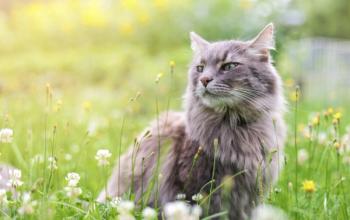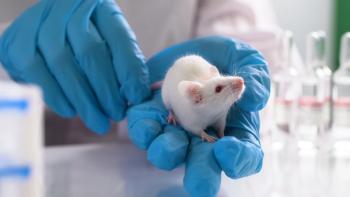
Developmental and epileptic encephalopathy type 50 is found in a Bengal kitten
An investigation highlights the importance of cross-species genetic research and the value of animal models in rare disease studies.
Researchers recently discovered a genetic mutation in a Bengal kitten that mirrors a rare human condition called developmental and epileptic encephalopathy type 50 (DEE50). This severe neurometabolic disorder results from mutations in the CAD gene, which plays a key role in making pyrimidine nucleotides, essential components of DNA, RNA, and other molecules the body needs to function. When the CAD gene fails, the body cannot produce enough of these nucleotides, which leads to seizures, anemia, and developmental delays. In humans, clinicians treat DEE50 with uridine, a supplement that bypasses the defective metabolic pathway.
The 4-month-old Bengal kitten began having seizures at 13 weeks. These episodes included body stiffness, facial twitching, and drooling. The kitten also showed abnormal behavior and episodes of reduced consciousness. Veterinarians performed blood tests, MRI scans, and cerebrospinal fluid analysis, but they found no clear cause. The kitten responded only partially and temporarily to antiepileptic drugs, which suggested an underlying genetic or metabolic problem. With no effective treatments available and the kitten’s quality of life declining, the owners chose humane euthanasia.
After euthanasia, the veterinary team investigated further. They reviewed all test results, which showed mild changes in blood cells but no major abnormalities. Suspecting a genetic disorder, they sequenced the kitten’s genome. The sequencing revealed a rare mutation in the CAD gene (XP_011279586.1:p.Ser2015Asn). This mutation affects a region of the CAD protein critical to its structure and function.
To test whether the mutation disrupted CAD activity, the researchers used a human CAD-knockout (KO) cell line. This cell line cannot grow without uridine unless researchers restore CAD function. When they introduced wild-type human CAD into the cells, the cells grew in uridine-free media. However, cells with the Ser2015Asn mutation failed to grow, proving that the variant destroyed CAD function.
Next, the team screened 110 Bengal cats to see how common the mutation was in the breed. They found 4 healthy cats with only 1 copy of the mutation, showing that the variant exists at low frequency. They found no cats with 2 copies of the mutation, which supports a recessive inheritance pattern. These findings prompted the researchers to recommend genetic screening in Bengal cats to help breeders avoid producing affected kittens.
Although the kitten never received uridine therapy, the findings from human studies and the KO cell experiment suggest that the supplement might have helped. In human patients, uridine has reversed seizures and improved developmental outcomes by using an alternative, CAD-independent pathway to create uridine monophosphate (UMP). This salvage pathway bypasses the defective step in pyrimidine synthesis.
This case marks the first documented instance of CAD deficiency in a cat. The Bengal kitten displayed key features of DEE50, including early-onset seizures, abnormal behavior, and resistance to standard antiepileptic medications. Although the kitten was euthanized before the disease could fully progress, the clinical signs already matched the human condition. This discovery gives scientists a spontaneous large animal model to study DEE50 and explore new treatment options, especially valuable given the limitations of existing rodent models.
By identifying this mutation in cats, the researchers expanded the known impact of CAD mutations beyond humans. Their work highlights the importance of cross-species genetic research and reinforces the value of animal models in rare disease studies. This Bengal kitten’s case not only opens new paths for veterinary treatment but also provides a powerful tool for understanding and treating DEE50 in humans.
Ava Landry is a 2026 PharmD candidate studying veterinary pharmacy at the University of Connecticut in Storrs.
Reference
Kaczmarska A, Christen M, del Caño-Ochoa F, et al. Epileptic encephalopathy in a young Bengal cat caused by CAD deficiency. Sci Rep. 2025;15:13506. doi:10.1038/s41598-025-98414-0
Newsletter
From exam room tips to practice management insights, get trusted veterinary news delivered straight to your inbox—subscribe to dvm360.






